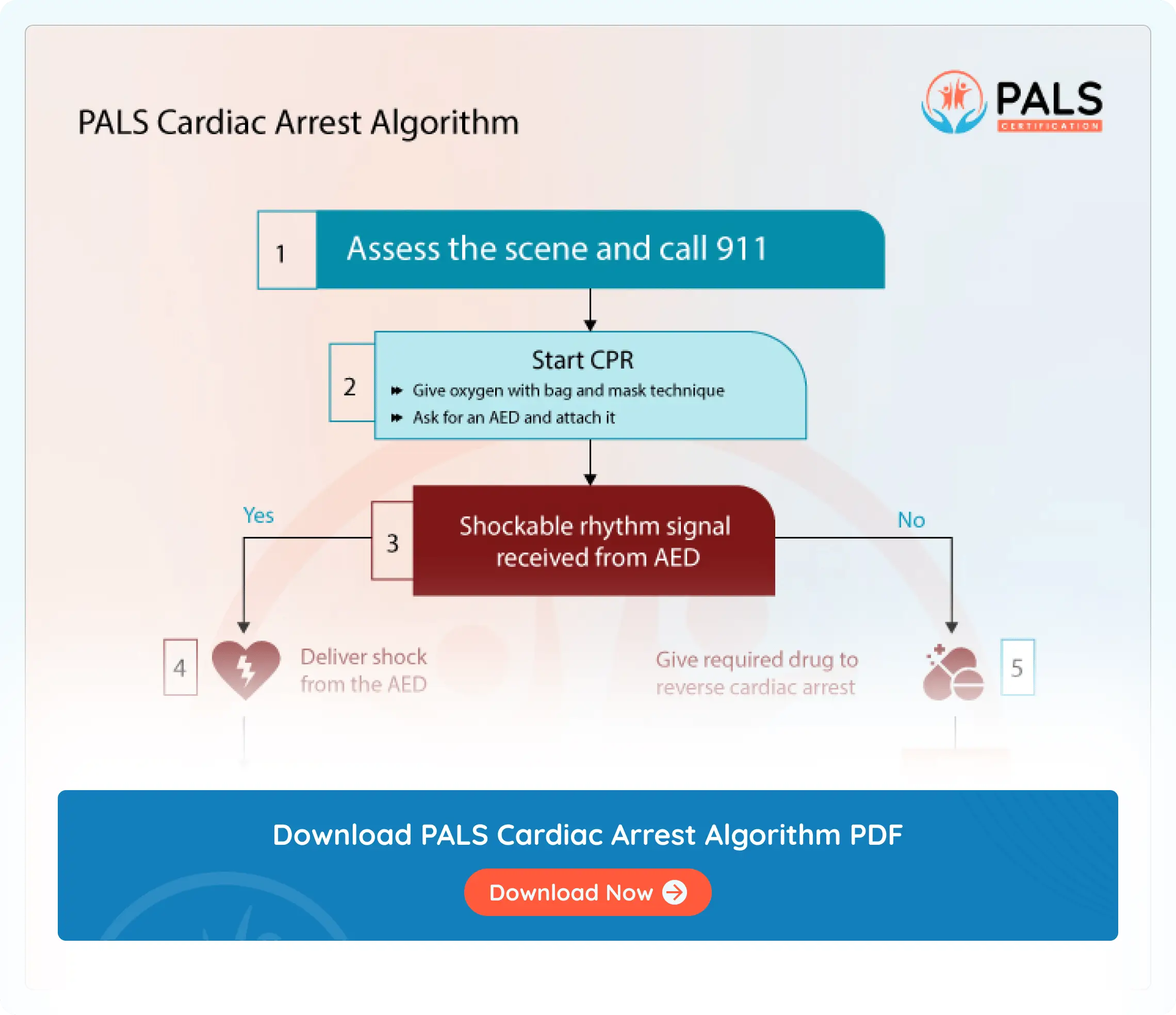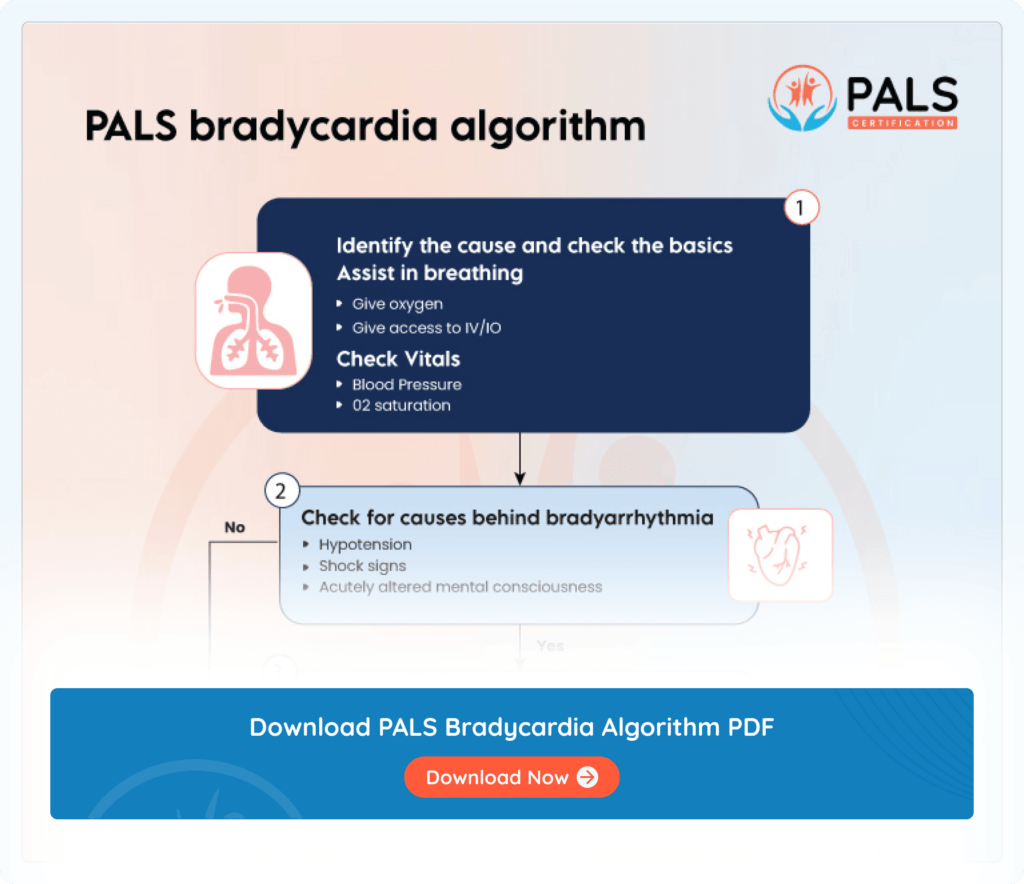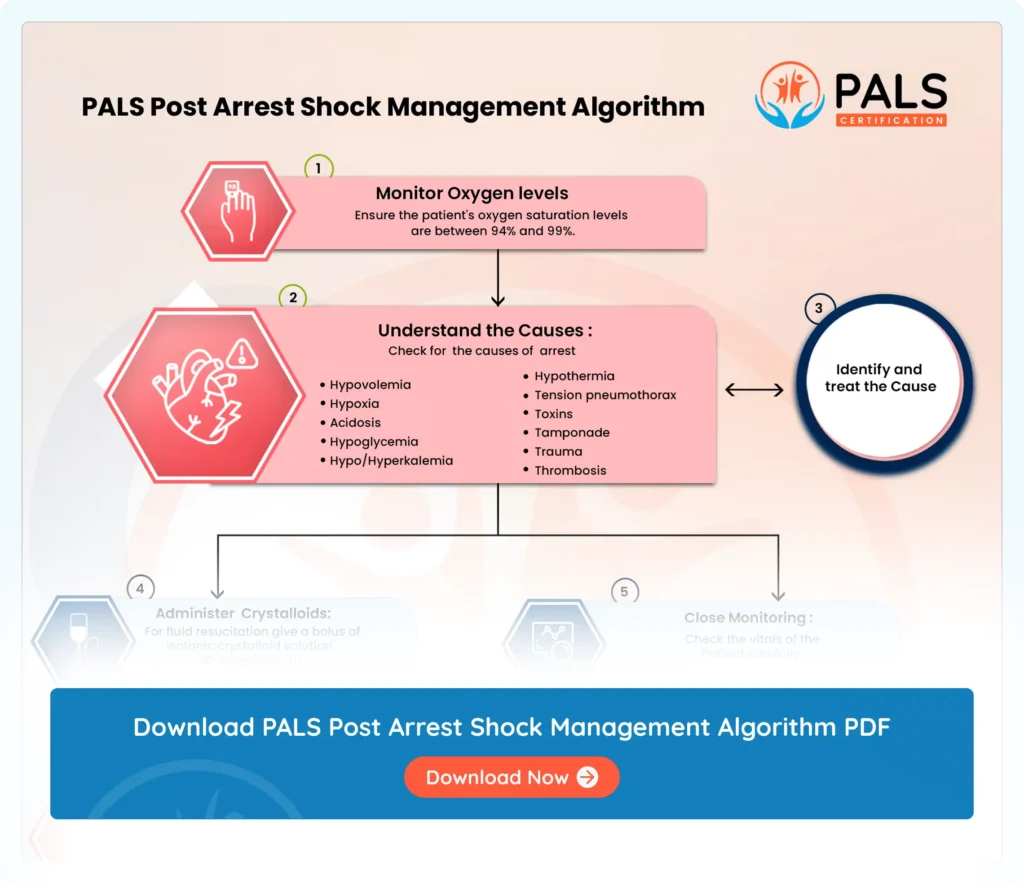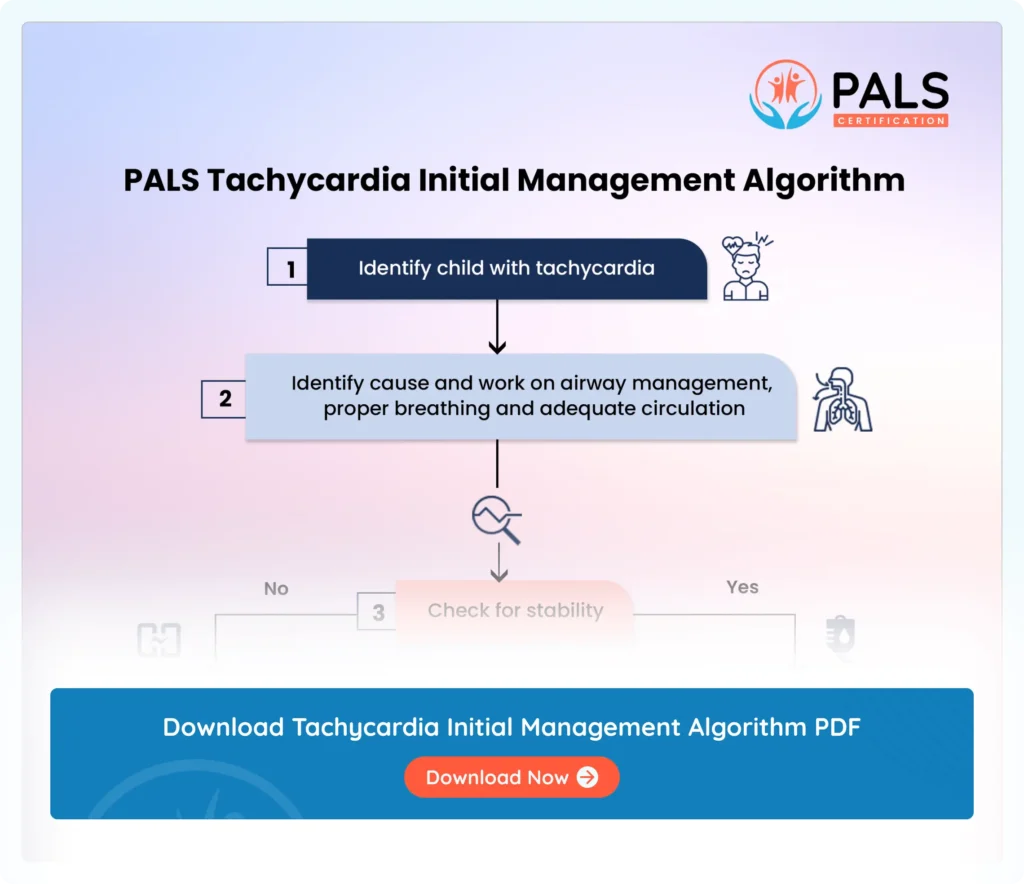- 4.0 CE Credit Hours
- For Pediatric Responders
- Includes Videos, Megacode Scenarios, Practice Tests & More
- FREE BLS Included
The PALS (Pediatric Advanced Life Support) cardiac arrest algorithm is a set of guidelines and procedures designed to assist healthcare providers in managing cardiac arrest in pediatric patients. It provides a structured approach to resuscitation, ensuring prompt and effective interventions to improve outcomes.
The algorithm below consists of a series of sequential steps that healthcare providers follow during a pediatric cardiac arrest. These steps include assessing the patient’s responsiveness, initiating CPR (Cardiopulmonary Resuscitation), administering medications, and providing advanced life support measures. With the algorithm in place you can respond faster to a pediatric medical emergency. Following these steps allows for early intervention which is critical in saving lives.

Online PALS certification and recertification
- Compliant with ECC and OSHA guidelines
- Nationally accepted course
- Available anytime, anywhere
- Earn CE credit hours
$119.00

Explanation of Flow Chart
- Scene Assessment: Child is unresponsive
- Shout for help and activate the emergency response system.
- Start CPR if the child is not breathing or only gasping.
- CPR :Ensure chest compressions are at least one-third the depth of the chest.
- Use bag and mask technique to deliver rescue breaths.
- Find and attach an AED to the victim’s chest.
- AED: Check for a shockable rhythm
- If a shockable rhythm (ventricular fibrillation or pulseless ventricular tachycardia) is detected, deliver a shock immediately.
- If no shockable rhythm is detected, administer epinephrine and CPR with cycles of compressions and ventilations. (Move to step 7)
- Continue CPR
- If CPR continues, provide 30 chest compressions followed by 2 ventilations.
- If an advanced airway is in place, deliver 1 breath every 6-8 seconds.
- If medications are available, administer per PALS guidelines.
- Repeat shock delivery with an AED.
- If you receive a signal, deliver the shock. If not, move to step 9.
- Check for recovery signs:
- If ROSC is achieved, monitor the child’s vital signs and continue supportive care.
- If no ROSC, continue CPR (step 5) and reevaluate rhythm and interventions.
Key components of the PALS cardiac arrest algorithm include
- Early recognition and activation: Healthcare providers should promptly recognize the signs of cardiac arrest and activate the emergency response system. (2)
- Basic life support: This includes initiating CPR with high-quality chest compressions, delivering rescue breaths, and using an automated external defibrillator (AED) if available. (2)
- Advanced cardiovascular life support: Once advanced life support measures are initiated, healthcare providers focus on optimizing circulation and oxygenation through interventions such as intravenous or intraosseous access, administration of medications (e.g., epinephrine), and advanced airway management. (3)
- Reversible causes: In medical emergencies, hypoxia, hypoglycemia, thrombosis, or hypothermia amongst other conditions fall under reversible causes. You can often stabilize a patient by removing the factors causing these ailments (4).
- Post-resuscitation care: Once the patient stabilizes, the healthcare providers shift their focus to post-cardiac arrest care, including targeted temperature management, hemodynamic support, and treating the underlying cause of the arrest. (1)
- Recovery Position: The recovery position is a technique used to place an unconscious but breathing individual on their side, with the upper leg bent and the head tilted back, to maintain an open airway and prevent aspiration(5).
Available Courses
PALS Certification and Recertification Online
ACLS Certification and Recertification Online
- 6.0 CE Credit Hours
- For Healthcare Professionals
- Includes Videos, Megacode Scenarios, Practice Tests & More
- FREE BLS Included
$119.00 $169.00
Get CertificateBLS Certification and Recertification Online
- 6.0 CE Credit Hours
- For Medical Fields
- Includes CPR & First Aid Bag-Mask Techniques
$36.95 $39.90
Get CertificateSource
- American Heart Association. Pediatric Advanced Life Support Algorithms. Retrieved from https://osteopathicfounders.org/wp-content/uploads/2021/01/PALS-Algorithms-2020.pdf
- Performance of a consensus scoring algorithm for assessing pediatric advanced life support competency using a computer screen-based simulator. Pediatric Critical Care Medicine. Retrieved from https://journals.lww.com/pccmjournal/Fulltext/2009/11000/Performance_of_a_consensus_scoring_algorithm_for.1.aspx
- Duff JP, Topjian A, Berg MD, et al. The use of high-dose epinephrine for patients with out-of-hospital cardiopulmonary arrest is refractory to prehospital interventions. Pediatric Emergency Care. 2005;21(4):227-237.
- Timing and Identification of the Cause and Treatment of a Cardiac Arrest: A Potential Survival Benefit Philippe Dewolf, a ,* Lina Wauters, a G https://www.ncbi.nlm.nih.gov/pmc/articles/PMC9485947/#:~:text=The%20most%20frequent%20reversible%20causes,%2C%20and%20toxins%20%5B3%5D
- What is the best position to place and re-evaluate an unconscious but normally breathing victim? A randomised controlled human simulation trial on children https://www.sciencedirect.com/science/article/abs/pii/S0300957218310657
All PALS Algorithms

PALS Bradycardia Algorithm
The PALS Bradycardia Algorithm is a systematic approach for managing slow heart rates in pediatric patients.

PALS Post Arrest Shock Management Algorithm
PALS Post Arrest Shock Management Algorithm outlines steps after ROSC for pediatric patients emphasizing critical interventions for stabilization

PALS Tachycardia Initial Management Algorithm
The PALS Tachycardia Initial Management Algorithm provides a systematic approach to assessing and treating pediatric tachycardia rhythms effectively.


